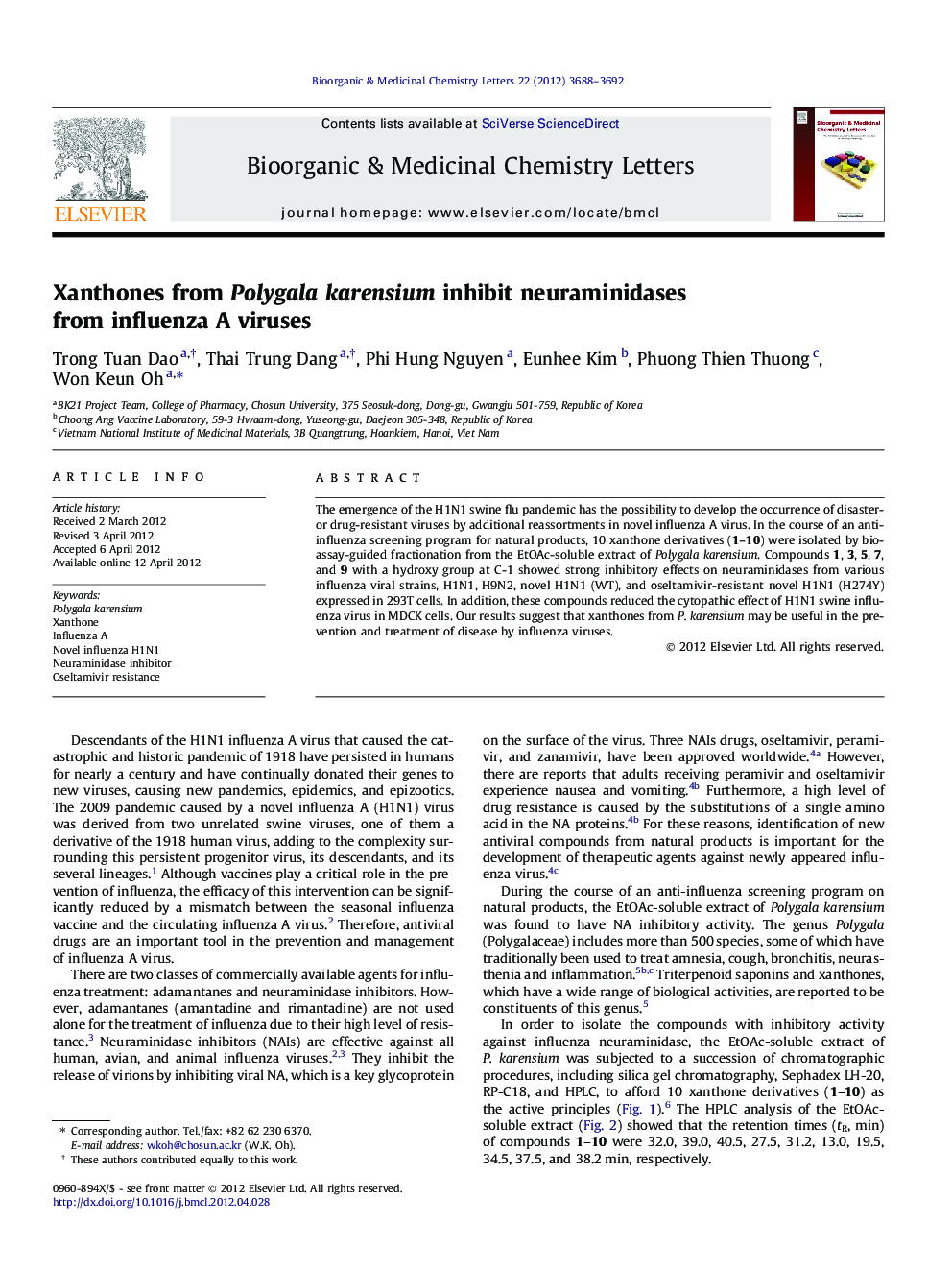| Article ID | Journal | Published Year | Pages | File Type |
|---|---|---|---|---|
| 1374059 | Bioorganic & Medicinal Chemistry Letters | 2012 | 5 Pages |
The emergence of the H1N1 swine flu pandemic has the possibility to develop the occurrence of disaster- or drug-resistant viruses by additional reassortments in novel influenza A virus. In the course of an anti-influenza screening program for natural products, 10 xanthone derivatives (1–10) were isolated by bioassay-guided fractionation from the EtOAc-soluble extract of Polygala karensium. Compounds 1, 3, 5, 7, and 9 with a hydroxy group at C-1 showed strong inhibitory effects on neuraminidases from various influenza viral strains, H1N1, H9N2, novel H1N1 (WT), and oseltamivir-resistant novel H1N1 (H274Y) expressed in 293T cells. In addition, these compounds reduced the cytopathic effect of H1N1 swine influenza virus in MDCK cells. Our results suggest that xanthones from P. karensium may be useful in the prevention and treatment of disease by influenza viruses.
Graphical abstractIn the course of an anti-influenza screening program for natural products, 10 xanthone derivatives (1–10) were isolated by bioassay-guided fractionation from the EtOAc-soluble extract of Polygala karensium. Compounds 1, 3, 5, 7, and 9 with a hydroxy group at C-1 showed strong inhibitory effects on neuraminidases from various influenza viral strains, H1N1, H9N2, novel H1N1 (WT), and oseltamivir-resistant novel H1N1 (H274Y) expressed in 293T cells. These compounds also reduced the cytopathic effect of H1N1 swine influenza virus in MDCK cells.Figure optionsDownload full-size imageDownload as PowerPoint slide
